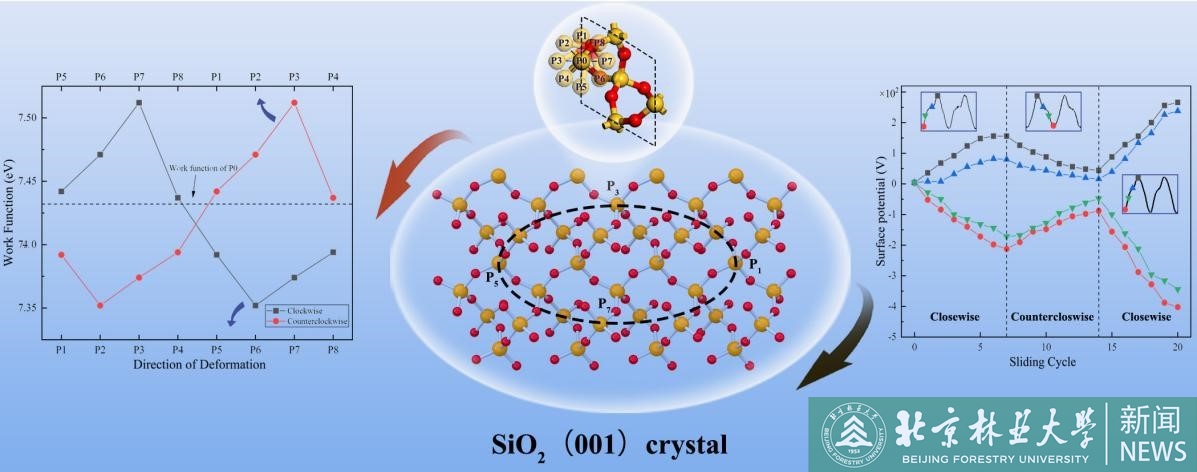Latest news
Recently, "Bidirectional electron transfer in Triboelectrification caused by friction-induced change in surface electronic structure" was published in Nano Energy, a Top journal in the field of materials science (IF=17.60). The first author of the article is Li Wei, a doctoral student from the School of Technology and the corresponding author is Professor Xu Xuefeng. Beijing Forestry University is the signature unit of the first author.

Triboelectrification (TE), which is also known as contact electrification (CE) and refers to the charge transfer between two contacting surfaces, is the earliest knowledge about electricity in human history and also one of the oldest topics in physics. To this day, TE has become the foundation of a variety of technologies such as Xerography, electrostatic separation [4] and the triboelectric nanogenerator (TENG). Meanwhile, it can also produce adverse effects. For example, the following discharge may damage micro-electronic devices and cause fire and even explosion. No matter to improve the performance of Xerography or to reduce the risk of discharge, fully understanding the charge transfer mechanisms in TE is necessary.
Triboelectrification (TE) plays fundamental roles in a wide range of industrial and scientific fields but its charge transfer mechanisms still remains elusive. It has been widely believed that the electron transfer in TE between two homogeneous surfaces should be always unidirectional. But we found here that the electron transfer during friction process will change its direction as the position of the contact point on the friction surface changes, indicating that bidirectional electron transfer occurs between the contacting surfaces. The experiments further show that the electron transfer direction at any given contact position on the friction surface keeps unchanged over time during the whole friction process if the relative sliding direction keeps unchanged, and when the sliding direction is reversed, the electron transfer direction at a given contact position will also be reversed if the friction surface is crystalline. To explain the observed non-unidirectional electron transfer, a theoretical model for the electron transfer in TE has been proposed, assuming that the changes in the electron transfer direction can be attributed to the changes in the surface work function caused by the friction-induced tangential deformation on the friction surface. The theory has further been validated by the first principles calculations about the influence of the tangential deformation on the surface electronic structure. The present work may offer a new perspective for understanding the charge transfer mechanism in TE and may provide potential applications in numerous fields involving TE such as triboelectric generator, petrochemical industry, power electronics and textile industry.
This work was supported by National Natural Science Foundation projects (51575054 and 51527901).
Paper link: https://doi.org/10.1016/j.nanoen.2023.108667












